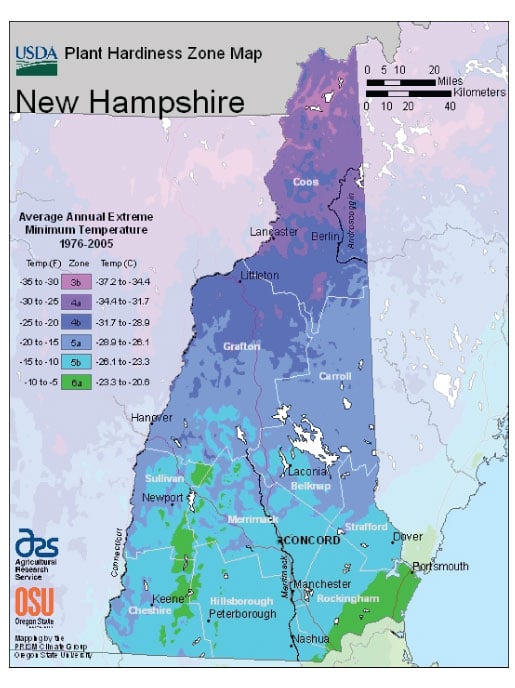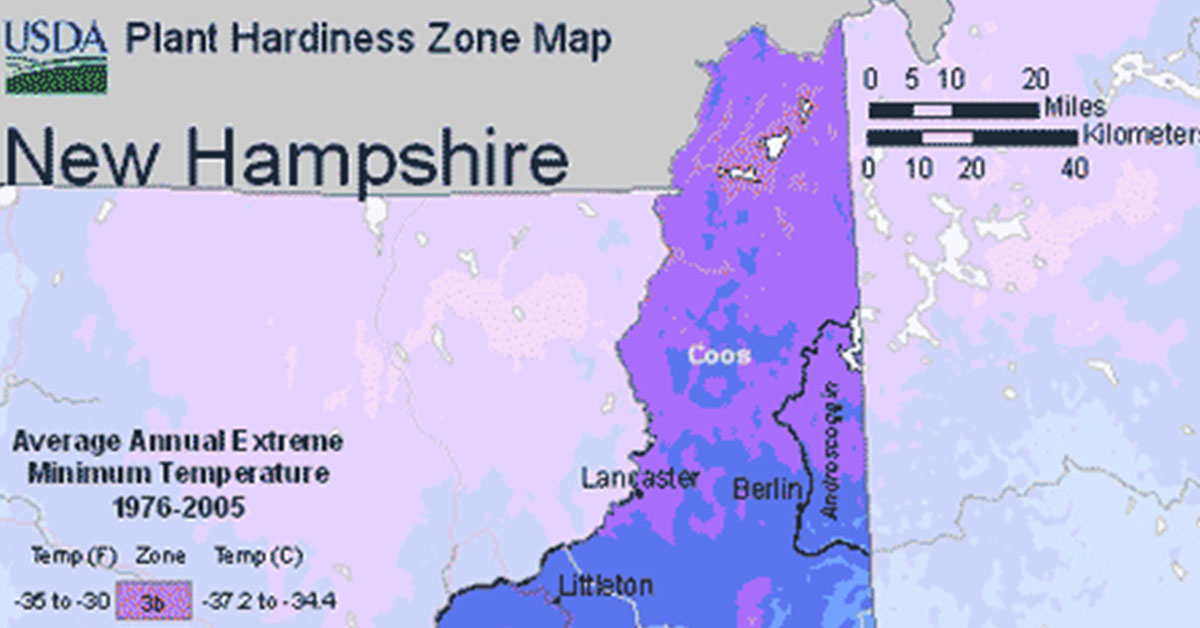
Table of Contents
Characteristics of New Hampshire Planting Region
- Severe storms,
- floods,
- blizzards,
- ice storms.
New Hampshire is quite far north, yet its growing season is a bit longer than those of other nearby states. The typical frost-free period starts in early May and finishes at the beginning of October, with a total of 149 days between frosts.
Challenges of Growing in New Hampshire
1. Extreme Weather Conditions
Extreme weather such as blizzards, thunderstorms and wildfires can make gardening difficult. To protect your plants, use a cover to guard them from harm.
2. Flooding

3. Heavy Snowfall
In the region, snowfall can be plentiful, potentially limiting one’s ability to lengthen the growing season into winter. To maximize one’s gardening experience year-round, it’s suggested to try indoor or protected planting.
Growing in the Granite State – The best plants to grow in New Hampshire’s planting zone
Here are some of the best plants to grow in New Hampshire’s planting zone:
- Lilacs (Syringa spp.): Lilacs are a classic favorite in New Hampshire gardens, known for their delightful fragrance and stunning clusters of purple, pink, white, or blue flowers. These deciduous shrubs bloom in the spring and add charm and nostalgia to the landscape.
- Peonies (Paeonia spp.): Peonies are beloved for their large, showy blooms that come in a range of colors, including pink, white, red, and coral. These hardy perennials thrive in New Hampshire’s planting zone and bring elegance to any garden.
- Hostas (Hosta spp.): With their attractive foliage and tolerance for shade, hostas are excellent plants for New Hampshire gardens. These perennials come in various sizes, shapes, and colors, making them versatile and popular choices for landscaping.
- Daylilies (Hemerocallis spp.): Daylilies are low-maintenance perennials that offer a profusion of colorful blooms throughout the summer. They come in a wide array of hues and can thrive in various soil types.
- Blueberries (Vaccinium spp.): New Hampshire is well-known for its blueberries, and growing these small fruit-bearing shrubs in the garden is a rewarding experience. They not only provide delicious fruit but also stunning fall foliage.
- Bee Balm (Monarda spp.): Bee Balm, also known as Bergamot, is a perennial herb that produces striking, nectar-rich flowers in various shades of pink, red, and purple. It attracts pollinators like bees and butterflies, making it a valuable addition to any wildlife-friendly garden.
- Maple Trees (Acer spp.): As the state tree of New Hampshire, maples hold a special place in the hearts of residents. Sugar maples, in particular, are highly prized for their vibrant fall foliage and are a symbol of the state’s stunning autumn scenery.
- Black-eyed Susan (Rudbeckia hirta): These bright and cheerful wildflowers are perfect for New Hampshire gardens. Black-eyed Susans are hardy perennials that bloom throughout the summer, attracting pollinators and adding a burst of color to the landscape.
- Coneflowers (Echinacea spp.): Coneflowers are tough and adaptable perennials that thrive in New Hampshire’s planting zone. They produce striking daisy-like flowers in various colors, attracting butterflies and other beneficial insects.
- Hydrangeas (Hydrangea spp.): Hydrangeas are versatile and beautiful shrubs that bloom abundantly in the summer. Their large, showy flower heads come in a range of colors, depending on soil pH, making them a popular choice for gardeners.
To ensure successful gardening in New Hampshire, it’s essential to consider the specific growing conditions of the region. The state’s planting zone experiences cold winters, so it’s crucial to choose plants that are cold-hardy and can withstand freezing temperatures.
Proper soil preparation, including adding organic matter and providing adequate drainage, is essential for supporting plant growth. Mulching can help retain moisture and protect plants from temperature extremes.
Watering practices should be adjusted according to the weather conditions, ensuring plants receive adequate hydration during dry spells and drier periods of the year. Regular pruning and maintenance will help keep the garden tidy and encourage healthy growth.
In conclusion, New Hampshire’s planting zone offers a plethora of plant options for gardeners to create beautiful and thriving landscapes. Whether it’s the fragrant blooms of lilacs and peonies, the delightful colors of daylilies and coneflowers, or the iconic maple trees, the best plants for New Hampshire gardens celebrate the state’s natural beauty and offer a bountiful display throughout the seasons. With proper care and attention, gardening enthusiasts can enjoy a rich and vibrant outdoor space that reflects the charm and character of the Granite State.
